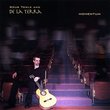| All Artists: Malcolm Arnold, Rumon Gamba, BBC Philharmonic Orchestra Title: Malcolm Arnold: Overtures Members Wishing: 2 Total Copies: 0 Label: Chandos Release Date: 4/26/2005 Genre: Classical Styles: Forms & Genres, Theatrical, Incidental & Program Music, Historical Periods, Modern, 20th, & 21st Century, Symphonies Number of Discs: 1 SwapaCD Credits: 1 UPC: 095115129326 |
Search - Malcolm Arnold, Rumon Gamba, BBC Philharmonic Orchestra :: Malcolm Arnold: Overtures
 | Malcolm Arnold, Rumon Gamba, BBC Philharmonic Orchestra Malcolm Arnold: Overtures Genre: Classical
|
Larger Image |
CD DetailsSimilar CDs |
CD ReviewsExuberant and vibrant works by Sir Malcolm Arnold Russ | Richmond, VA | 07/15/2006 (4 out of 5 stars) "The musical style of British composer Sir Malcolm Arnold (b. 1921) is rather unique. Listeners may detect some similarities with the music of Walton or, to a lesser degree, Sibelius. However, Arnold is one of those composers that can be identified from just listening to 10 seconds or so of any song, regardless of the song and regardless if you are familiar with the song or not. His compositions are dominated by brass and percussion, which is not surprising when considering the fact that Arnold is an accomplished trumpet player. If Arnold prefers any woodwind instrument, it would have to be the piccolo which frequently accompanies a marching drum part, in military-like fashion.
The BBC Philharmonic is comfortable in Arnold's distinct style, and the brass and percussion do the music justice. Several of the pieces on this program, featuring a selection of Arnold's exuberant overtures and orchestral works, are comedic in nature. There are low brass oompahs, trombone glissandos, drunken bassoons (similar to Arnold's Scottish Dances), overblown endings, and Arnold's characteristic French horn rips. The opening piece, "A Grand Grand Festival Overture," features a part for three vacuum cleaners and one floor polisher. After four gunshots are heard, symbolizing the execution of these musicians, the music proceeds to a coda full of fanfares, chimes, and timpani, accompanied by organ, which appears to be an obvious parody of the extended codas of certain Romantic composers. Many of the selections here could also be considered programme music. "Tam o' Shanter" for instance, concerns a story of an alcoholic who rides his horse home, only to be chased by evil spirits. The tendency to include such elements in this music makes some of the pieces a little difficult to follow, from purely a listening standpoint. In fact, it seems like much of the crashing and swooping elements of this music would be well suited to accompany an action movie. Another tendency of this music is to suddenly alter between pianissimo to fortissimo and back again. Some may find this to be annoying, on the account of that the volume dial may need to be frequently adjusted. Overall, I would place this release somewhere between four and five stars. Despite the fact that the pieces on this program span Arnold's entire compositional career, there seems to be a lack of variety, although that is probably due to the fact that Arnold's style is so distinct. I will mention that my favorite moments within the Arnold symphonies (finales of 6, 7 and 8; first movements of 5 and 7) and the dance suites (English and Scottish) give me slightly more pleasure than my favorite overtures on this program. Although, anyone who enjoys the music of Arnold, or any of the orchestral devices mentioned above would do well to pick up this CD. 75:43" |

 Track Listings (10) - Disc #1
Track Listings (10) - Disc #1

